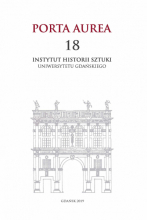Dworzec Morski w Gdyni – historia i architektura na tle wybranych budynków morskich terminali pasażerskich w Europie
Abstrakt
In the late 1920s, the architecture of marine terminals in Western European harbours started to change significantly. It was inspired by both the need to serve large numbers of passengers in a short time, but also the expectations regarding the quality of the facilities from tourists travelling on luxurious ocean liners. It was also a period when Gdynia became an important hub for emigrants travelling from Poland to Americas. The increasing number of passengers in the city resulted in the plans to construct a modern complex of a Marine Station. It was designed by the German Dyckerhoff & Widmann Company with the support of the well known Polish architect Wacław Tomaszewski. The building was opened in December 1933 and provided various facilities for the passengers, as well as a fast and efficient passenger control. The architects used Modernist forms, which were typical of Gdynia of the period, and were seen as a manifestation of Polish modernity and cultural development. The innovative aspect of the Marine Station’s building was also the construction, especially shell vaultings of reinforced concrete. The key visual elements of the interior were patriotic decorations, which manifested the power of the new Polish state.
Downloads
Bibliografia
Kicinger Anna, Polityka emigracyjna II Rzeczpospolitej, Warszawa 2005, http://www.cefmr.pan.pl/docs/cefmr_wp_2005–04.pdf [dostęp: 26.06.2018].
Małkowski Kazimierz, Bedeker gdyński, Gdańsk 2001.
May Roland, Shell sellers. The international dissemination of the Zeiss-DYWIDAG System, 1923–1939 [w:] 5ICCH Proceedings, ed. Donald Friedman, Brian Bowen, Thomas Leslie, John Ochsendorf, Chicago 2015, vol. 2, nlb.
Olszewski Andrzej K., Nowa forma w architekturze polskiej 1900–1925. Teoria i praktyka, Wrocław–Warszawa–Kraków 1967.
Omilanowska Małgorzata, Propaganda wizualna „Polski morskiej” w II Rzeczypospolitej [w:] eadem, Budowanie nad Bałtykiem. Studia z architektury i sztuki Gdańska, Pomorza i Żmudzi, Gdańsk 2017, s. 164–172.
Peter Bruce, The Architecture of Promotion [w:] Ocean Liners. Speed and Style, ed. Daniel Finamore, Ghislaine Wood, London 2018, s. 52–65.
Posłuszna Anna, Funkcjonalny kompleks obsługi emigrantów. Architektura Etapu Emigracyjnego w Gdyni, „Porta Aurea” 2015, t. 14, s. 178–202.
Rasulo M., The construction and the reconstruction of the Maritime Station of Naples in the chronicles of the time from the Neapolitan newspaper libraries [w:] Maritime Heritage and Modern Ports, ed. Roger Marcet i Barbe, Carlos A. Brebbia, Joan Olivella, Southampton 2005, s. 49.
Stegmann Knut, Das Bauunternehmen Dyckerhoff & Widmann. Zu den Anfängen des Betonbaus in Deutschland. 1865–1918, Berlin 2014.
Szerle Marcin, Konieczność a przymus. Zagadnienia migracyjne w założeniach ekspozycji stałej Muzeum Emigracji w Gdyni [w:] Od exsilii do exile. Przymus w migracjach, „Studia Historica Gedanensia” 2014, t. 5, s. 395–396.
Szerle Marcin, Rozwój infrastruktury emigracyjnej w Gdyni w okresie II Rzeczypospolitej [w:] Morze nasze i nie nasze. Zbiór studiów, red. Piotr Kurpiewski, Tadeusz Stegner, Gdańsk 2011, s. 151–163.

 Uniwersyteckie Czasopisma Naukowe
Uniwersyteckie Czasopisma Naukowe




